| URLs in this document have been updated. Links enclosed in {curly brackets} have been changed. If a replacement link was located, the new URL was added and the link is active; if a new site could not be identified, the broken link was removed. |
Database Reviews
Encyclopedia of Life Sciences (Online)
Washington State University Vancouver
Vancouver, Washington
bridgewa@vancouver.wsu.edu
Encyclopedia of Life Sciences (Online) ISBN 0-470-01590-X; ISBN 978-0-470-01590-2. John Wiley and Sons. {http://www.mrw.interscience.wiley.com/emrw/047001590X/home/}
Introduction
The Encyclopedia of Life Sciences (ELS) is an impressive resource containing over 3,500 peer-reviewed articles by over 5,000 scientists. The online version of this encyclopedia was originally launched in 2001 and was followed in 2002 by the 20-volume print edition. In 2004, John Wiley and Sons acquired ELS from the Nature Publishing Group. Since its purchase of ELS, Wiley has been adding and updating articles, including the gradual incorporation of articles from the Encyclopedia of the Human Genome. With an impressive list of advisors and authors, broad subject coverage, exquisite articles, and a relatively easy to use interface, ELS is a remarkable resource.
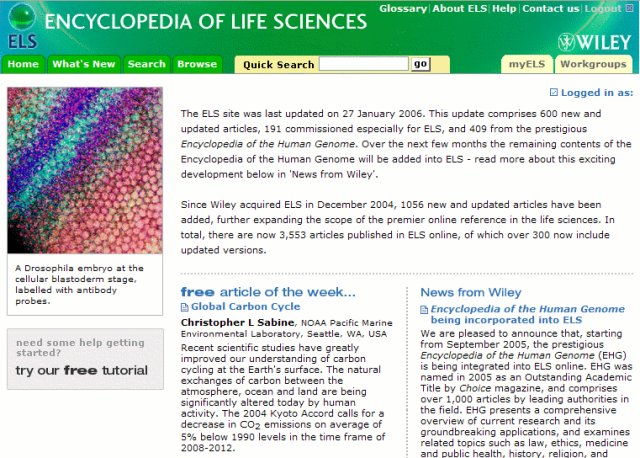
Figure 1: Encyclopedia of Life Sciences Front Page
Articles and Other Content
Both the undergraduate seeking introductory articles about a research topic and the experienced researcher will find useful articles in ELS. Articles are categorized as either "introductory" or "advanced" and clearly labeled as such in both search results and on the article itself. Introductory articles are written to be used by lower-division college students and do not contain technical jargon nor in-text references. Bibliographical references are included at the end of each article as suggested further reading. Advanced articles are geared toward upper-division undergraduates, graduate students, and researchers. The Encyclopedia also contains articles categorized as "keynote" articles; these articles deal with emergent and controversial topics. ELS covers an astounding variety of subjects covering the entire spectrum of the life sciences, with particular focus on molecular and cellular biology. Broad subject areas include:
- Biochemistry
- Cell Biology
- Clinical Medicine
- Developmental Biology
- Diseases and Disorders
- Ecology, Evolution, and Diversity of Life
- Functional and Comparative Morphology
- Genetics and Molecular Biology
- Immunology
- Microbiology and Virology
- Neuroscience
- Plant Science
- Structural Biology
- Science and Society (bioethics, biographies, history and philosophy of science)
More impressive than the sheer number of articles, is the overall quality and depth of the articles included in ELS. Entries are lengthy, the equivalent of three to ten or more printed pages, well written and richly cross-referenced. Many articles include high-quality figures and illustrations that add visual interest and deepen the reader's understanding. Each article begins with a brief abstract and is broken up by helpful subheadings.
Articles are laid out very nicely, with plenty of white space and easy-to-read text. Each article includes a navigation box that allows the user to easily access specific parts of the article. This navigation box also includes links to the following: a high-quality PDF of the entry, a copyright permissions request form, a suggested citation for the article, and a list of related articles within ELS. This navigation box makes it fantastically easy to work with the article and facilitates further research. Each article clearly displays a DOI for easy linking and referencing. The aforementioned cross-referencing to other entries is excellent and the suggestions for further readings at the end of each article are a gold mine!
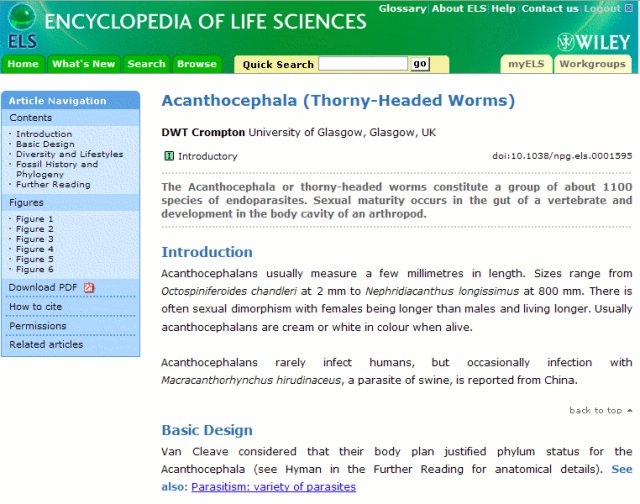
Figure 2: A typical article. Note the helpful navigation box.
Though the articles constitute the vast majority of the content included in ELS, it is worth mentioning that there is also a nice glossary of over 4,000 life sciences terms included.
ELS also has a high-quality index, which can be browsed or searched. The inclusion of the index in addition to all of the other methods of locating articles (searching, browsing by subject, article, or author) is very nice indeed. It is an example of how the ELS electronic product combines the most powerful elements of an electronic resource without sacrificing some of the finest qualities of a print resource. Turning to the index of an electronic resource such as this might not be intuitive to some users but this reviewer found it to be a particularly powerful way to locate relevant information within the resource.
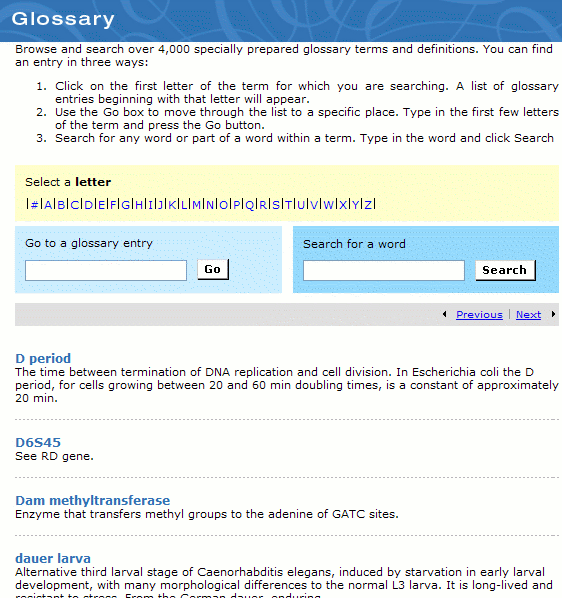
Figure 3: Glossary
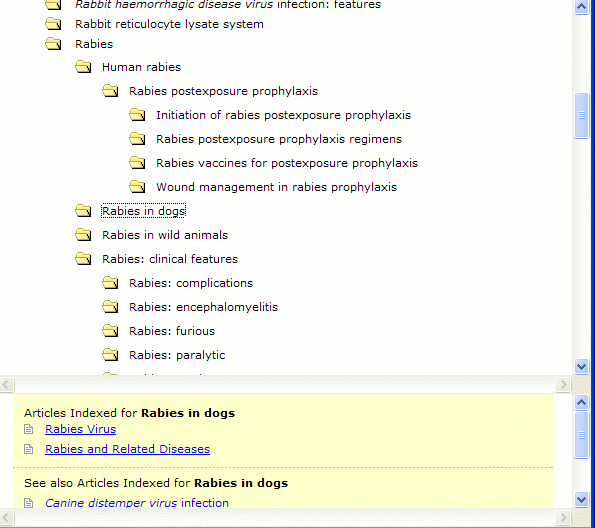
Figure 4: Index
Interface and Searching
Overall, the interface to ELS is very pleasant. Look and feel issues are handled with a light touch -- neither so spare as to seem stark and unwelcoming nor unnecessarily adorned and cluttered. As mentioned above, the interface to individual articles is especially nice.
Articles can be located in a variety of ways -- basic searching, advanced searching, browsing authors, articles, or subjects, or by searching or browsing the index. These many access points are terrific but can be a little overwhelming for the new user. Browsing by article was a particularly enjoyable way to work with the ELS as the interface allows the user to refine their results by topic and keyword. There were some minor interface irritations -- inconsistent use of new windows for browsing, for example -- but overall the interface designers did a wonderful job of marrying a book-like layout for the individual entries with the power and versatility offered by the electronic format.
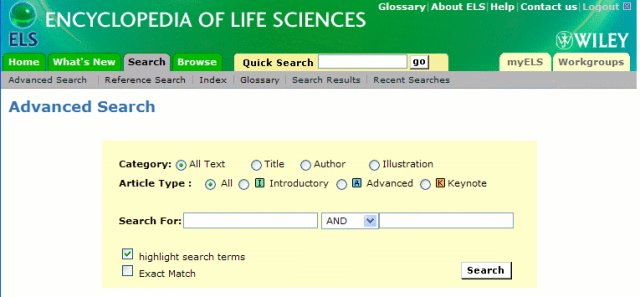
Figure 5: Advanced Search. Note the many ways to search ELS in the submenu below the search tab.
Basic keyword searching is effective and quick, giving fairly relevant results. The advanced search feature gives the user more control over their search, providing many useful ways of limiting the search. Wildcard searching is permitted but this feature is not obvious.
Search results are clear and generally relevant. The display of search results is excellent! A brief display of records is provided, including a very brief description of the article and a wealth of relevant information (introductory vs. advanced, new, updated, etc.) is conveyed by clear, meaningful icons.
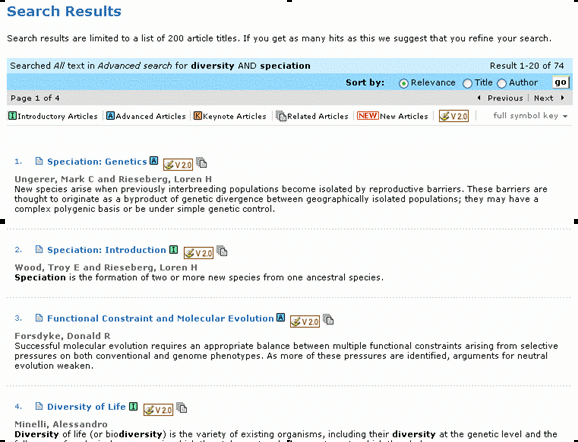
Figure 6: Search results.
Other Features
ELS also allows you to personalize your experience by using myELS. This personal account tool allows users to save articles and illustrations to customizable folders within a password-protected account. Ostensibly, searches may also be saved, for easy reuse in the future. This user, however, was unable to determine how to save a search, even after careful scrutiny. MyELS also features a "notepad" feature, which allows users to store whatever text they would like.
ELS also allows users to create workgroups, private accounts that can be shared among a number of users. I could see this feature being used equally effectively as a tool to help students learn collaboratively and as a tool for a group of researchers engaged in a study.
Summary
The Encyclopedia of Life Sciences is a wonderful resource -- broad and deep in its coverage, current, authoritative, and very enjoyable to use. Some minor interface details were bothersome but overall the site was highly usable. It should be noted that the publishers intend to migrate the resource over to the Wiley Interscience delivery platform. It is unclear when that change will occur or how it might impact the usability of this fine resource. Currently priced at $5,670.00, this resource is not inexpensive. However, the sheer scope of coverage combined with the very high quality of the content make ELS a remarkable work. All libraries serving researchers in the biological sciences, whether undergraduates or researchers in the field, should strongly consider this exemplary resource.
| Previous | Contents | Next |
